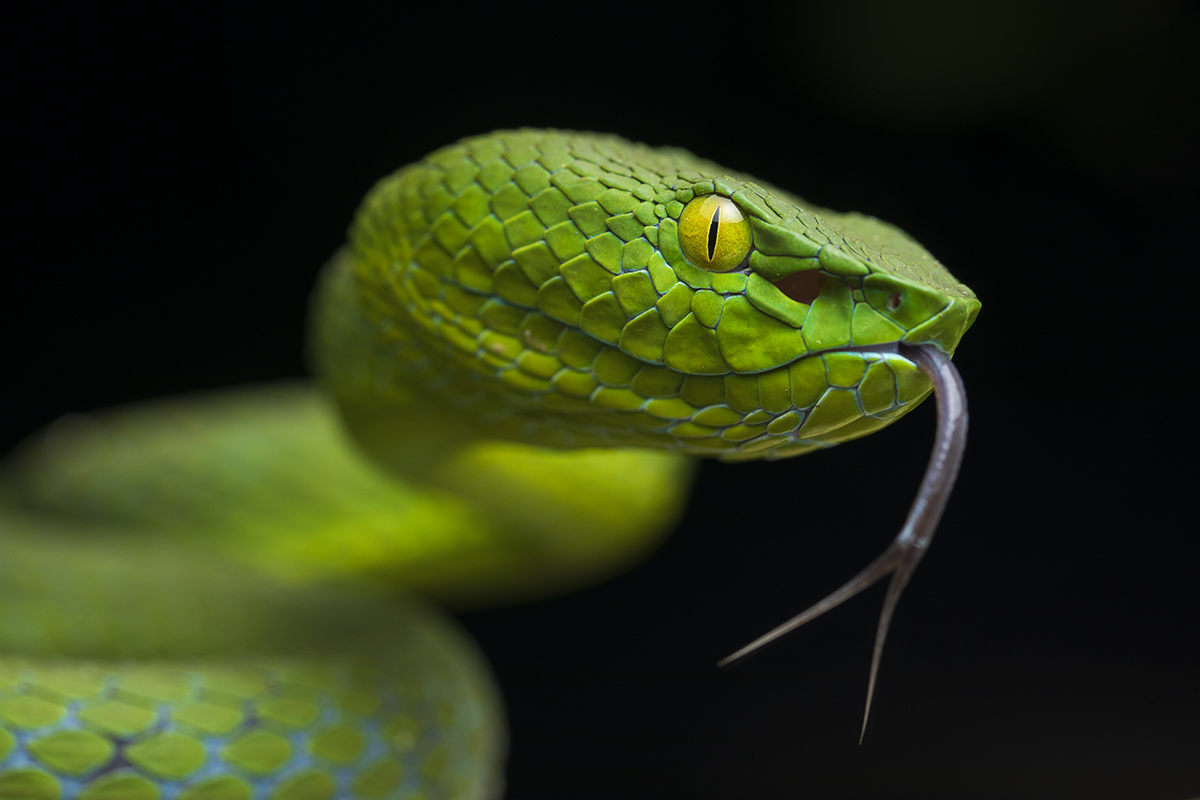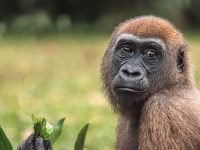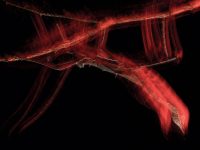
Like a compass guiding them, snakes use their captivating tongue dance to collect a cocktail of chemicals to decipher their environment. These chemosensory licks are used by snakes and lizards of the order Squamata in a multitude of ecological and social interactions. For example, to detect prey and predators, as well as to recognise the sex, age, or identity of individuals of their species. The collected chemical particles are released into a specialised organ located on their palate: the vomeronasal organ. Interestingly, the specialisation of this organ and the behaviour linked to chemosensory licking vary between species and seem to be profoundly determined by their ecology, diet, and the type of communication they use. Foraging species with a more generalist diet and communication based mainly on chemical signals generally have a more specialised vomeronasal organ and/or a higher rate of tongue protrusions. Toying with light when photographing striking species such as this female Popeia fucata snake from Malaysia can lend a dramatic and striking context to the scene. Even more so when the light on the subject isolates it from the irregular background of the vegetation. Using an external flash placed above the snake, accompanied by a high shutter speed, allowed me to freeze one of those chemosensory licks that the snake used to try to decipher its surroundings.





